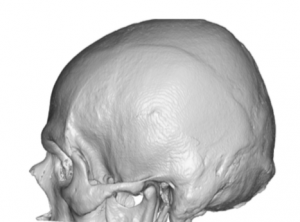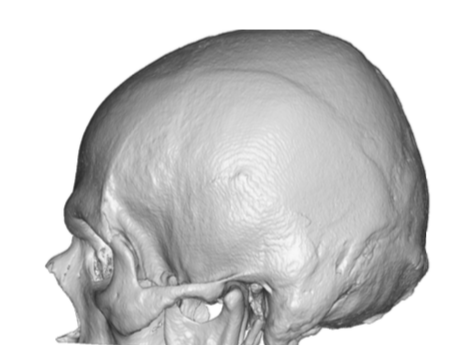In skull reshaping surgery one of the important fundamental procedures is skull reduction. Removing portions of prominent or excessive heights of the skull in various areas is commonly done. The key to skull reduction is never whether it can be done but rather can enough bone be removed to achieve a satisfactory result. This will be dependent on the thickness of the skull and making sure that its inner table is not violated during the reduction.

The mean thicknesses of the frontal bone was 7.9mm male and 10.1mm female. For the parietal bone it was 9.7mm male and 6.1mm female. For the temporal bone it was 6mms male and 6.1mm female. At the back of the head the occipital bone was 10.1mm male and 10.1mm female. For the frontal sinuses men had larger ones on both sides, 16.1mm right and 16.4mm left for men and 13.7mm right and 13.9mm left for women.
This radiographic study showed that women have significantly thicker frontal bones than men. Conversely men had larger frontal sinuses compared to women.
The larger frontal sinuses in men would be completely expected and is well known. It is the larger frontal sinuses due to increased pneumatization that makes them a defining male feature. It is the thicker forehead bone above the frontal sinuses that is a bit surprising. But perhaps not when one considers that the natural forehead slope is more vertical in women than men. Men have a more sloped back forehead which may account for why it is thinner than the more vertically shaped forehead in women.
While preoperative x-rays are often used to determine how much bone can be reduced in any skull area, the relevance of this study is that it shows the various thicknesses of the skull in four main areas…which provides insight into the general nature of how much skull reduction is possible.
Dr. Barry Eppley
Indianapolis, Indiana



